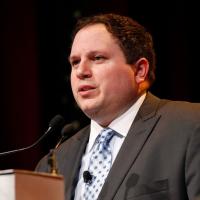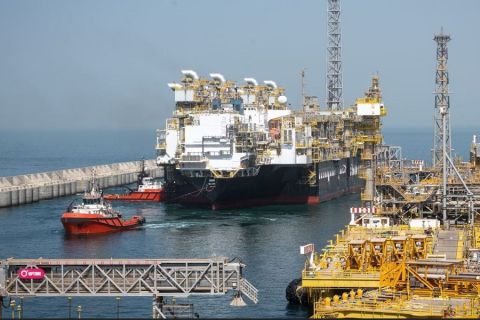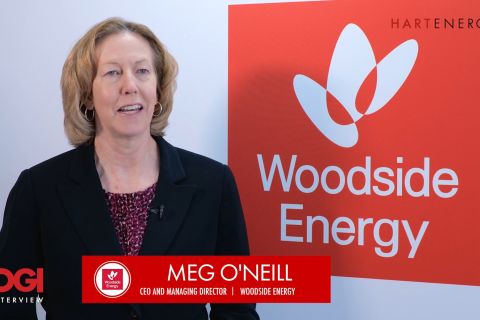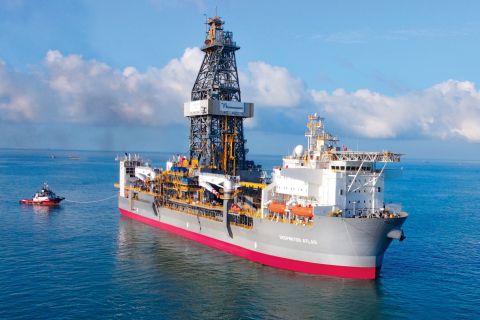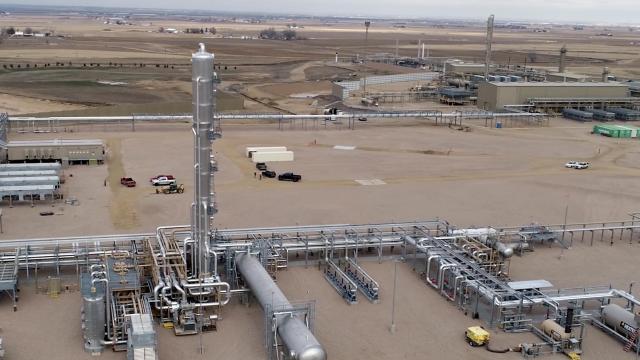
DCP Midstream's operations in Colorado. (Source: screenshot from the DCP MIdstream website)
Following the crashing of oil, gas, and liquid commodity prices back in 2014, DCP Midstream has been working to reduce its sensitivity to commodity prices. This has been achieved by investing in fee-based growth projects, which has resulted in a 65% increase in fee-based gross margins so far this year.
The DCP 2.0 strategy, now in its fourth year, is focused on using technology to drive optimization and improve efficiencies throughout DCP Midstream’s portfolio of assets. These assets are located in some of the most prolific plays in the country, including the Permian Basin, Eagle Ford Shale, Scoop, and the Denver-Julesberg (D-J) Basin.
The D-J Basin in particular has been a standout play for the company this year as it experienced a double-digit year-over-year volume growth in the second quarter. This region is poised for even more growth following the recent announcement of a long-term agreement with Western Midstream Partners to provide up to 225 million cubic feet per day (MMcf/d) of incremental processing capacity by the middle of 2020.
“As we continue to optimize our capital spending, this agreement offers a highly accretive solution at an attractive multiple and we believe it’s a win-win for all stakeholders in the DJ,” DCP Midstream’s chair, president and CEO Wouter van Kempen said during the company's recent conference call to discuss 2Q earnings. He noted that this agreement is the fastest solution to meet its processing commitment to customers while also meeting the company’s strategic goals in three critical ways.
"One, we're delivering on the promise of future cash flows while eliminating the need to spend capital on new processing capacity. This in turn allows us to significantly reduce our 2020 growth capital by utilizing this third-party infrastructure. Two, we will continue to control the NGL barrels, allowing us to capitalize on full-value chain economics via connections to our D-J Southern Hills extension, Front Range, and a Cheyenne Connector for residue gas and ultimately the Sweeny fractionators on the Gulf Coast,” he said.
Thirdly, since DCP has already secured permits and land for its proposed Bighorn processing plant it preserves the option to build future processing capacity in the region should customer demand require it.
Colorado Expansions
By the middle of 2020, the company anticipates having a total of nearly 1.7 billion cubic feet per day (Bcf/d) of processing capacity in the D-J Basin. A large chunk of this new capacity is a result of the recently completed O’Connor 2 processing plant, which has a total capacity of 300 MMcf/d.
DCP officials also announced the company is increasing NGL takeaway capacity on the Southern Hills Pipeline by 40,000 barrels per day (bbl/d), which will increase the system’s total capacity by about 20% to 230,000 bbl/d by the end of 2020.
“Through the addition of incremental pump stations, this expansion is underpinned by future volume growth and the added capacity from the D-J Southern Hills extension, which remains on track to be in service in the fourth quarter of 2019. The Front Range and Texas Express pipeline expansions are underway and are now expected to be in service in Q4 of this year," van Kempen said.
While the company is undergoing a transition, one thing that remains the same is its commitment to its highly concentrated super system strategy that allows the company to maximize its assets. By providing customers with multiple options in a single region, DCP ensures highly reliable services with minimum down time.
The super system strategy also makes for higher reliability when it comes to financials and investments. “Looking at our overall portfolio growth, the vast majority of our investments are focused on fee-based logistics assets and combined with our existing premier footprint we are well positioned to achieve our long-term strategic goals while also solving for needed capacity additions in these top tier regions,” van Kempen said.
The company has been significantly reducing its commodity sensitivity. Since the price downturn, DCP has been working to strike a 50:50 balance between its fee-based logistics and marketing segment and its gathering and processing operations.
“We negotiated strong contracts within our G&P footprint, including minimum volume and margin commitments and we have navigated basin bottlenecks and infrastructure constraints by leveraging strong partnerships to seize commercial opportunities that move molecules. We continue to make great progress on our DCP 2020 vision to become the safest, most reliable low-cost midstream service provider, sustainable in any environment," van Kempen said.
Recommended Reading
Sangomar FPSO Arrives Offshore Senegal
2024-02-13 - Woodside’s Sangomar Field on track to start production in mid-2024.
BP: Gimi FLNG Vessel Arrival Marks GTA Project Milestone
2024-02-15 - The BP-operated Greater Tortue Ahmeyim project on the Mauritania and Senegal maritime border is expected to produce 2.3 million tonnes per annum during it’s initial phase.
Deepwater Roundup 2024: Offshore Africa
2024-04-02 - Offshore Africa, new projects are progressing, with a number of high-reserve offshore developments being planned in countries not typically known for deepwater activity, such as Phase 2 of the Baleine project on the Ivory Coast.
The OGInterview: How do Woodside's Growth Projects Fit into its Portfolio?
2024-04-01 - Woodside Energy CEO Meg O'Neill discusses the company's current growth projects across the globe and the impact they will have on the company's future with Hart Energy's Pietro Pitts.
Rystad: More Deepwater Wells to be Drilled in 2024
2024-02-29 - Upstream majors dive into deeper and frontier waters while exploration budgets for 2024 remain flat.

